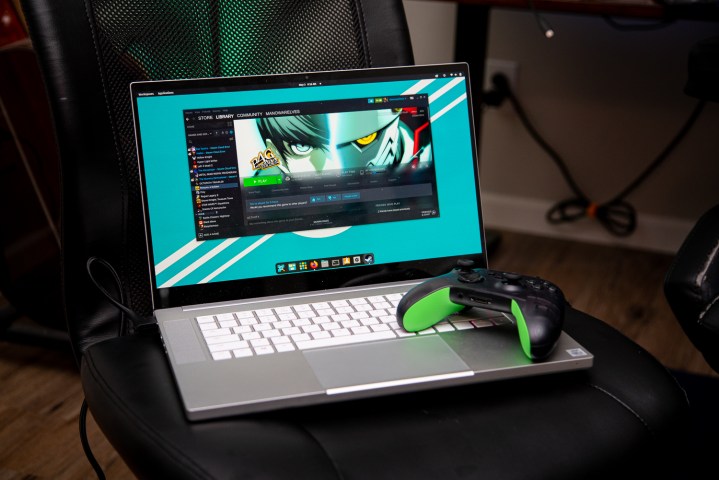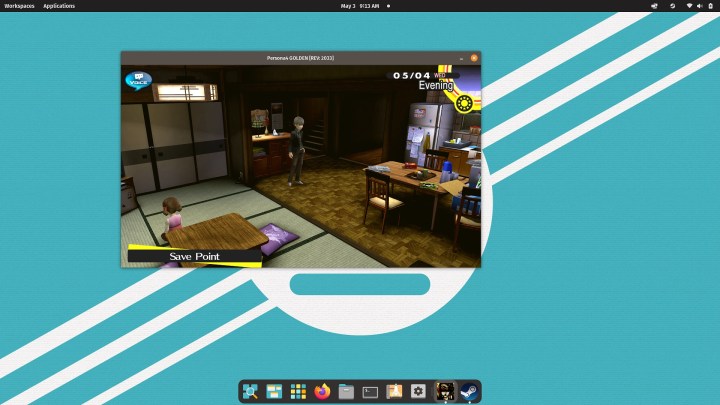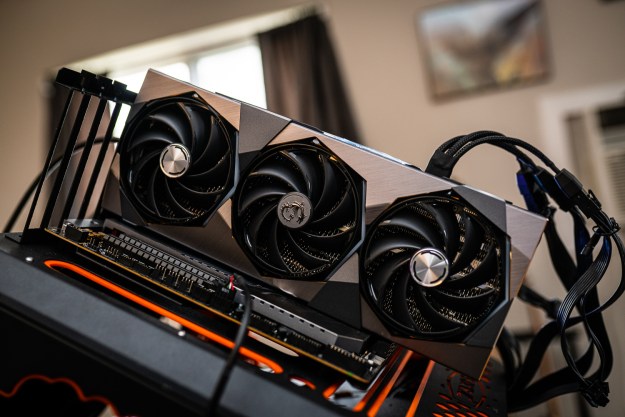Like many people I’ve had some recent trouble with Windows. I deal with it because I have to, despite my issues with Windows 11 and its requirements and Microsoft’s consistent encroaching on users’ privacy. Finally, I decided to do something about it.
I uninstalled Windows 11 on my gaming PC and tried my hand at Linux gaming. The Steam Deck has bolstered Linux support massively in the last few months, and now that I’ve spent some time with Tux, I don’t want to go back.
Why Linux?

In the vast catalog of articles and videos that attempt to install a Linux distro on a gaming PC, there’s a central question missing: Why? Why would you go with Linux instead of Windows when Microsoft’s OS has clearly better driver and game support, as well as more prompt responses to issues and access to better utilities?
There are a few reasons, even if the scales generally fall in favor of Windows. For one, Linux is free from any central authority. You don’t have to worry about advertising IDs, features you don’t want or disagree with, or updates that may change the way you interact with your PC.
I really don’t need Cortana.
In addition, you don’t have to deal with bloat. Windows has a ton of features, and I’d wager that most people don’t interact with the majority of those features. I certainly don’t. I don’t need the stocks each morning, a rewards program, or personalized recommendations based on data Microsoft has gathered about me. And I really don’t need Cortana.
Because of the lack of bloat, some games simply run faster. The margins are small, and they aren’t always present, but Linux can have tangible performance benefits. Games that support Vulkan (which works natively with Linux, unlike DirectX) typically run faster with it instead of Microsoft’s API.
That answers why you shouldn’t use Windows, but not why you should use Linux. That’s because the answer really comes down to how you want to use your PC. Linux comes through various distros (or distributions) that allow developers to tailor features to a specific purpose, and there are a lot of options for gaming.

Pop!_OS is one of the more popular options, and it’s what I used to replace Windows on my gaming PC. However, there are a ton of other options. Lakka is a Linux distro built on top of RetroArch specifically for emulating older games, while ChimeraOS is a Linux distro that turns your PC into a console for living room setups (and even allows you to install and manage games remotely).
Linux isn’t the platform for PC gaming; it’s an alternative. If you’re gaming on Windows without problems, you’re best sticking with Microsoft’s OS. For those that are more concerned with their privacy and want to try something different, however, Linux is around and better than ever for PC gaming.
Living with Linux

I chose Pop!_OS for my experiment, which just so happens to be one of the easiest Linux distros to get started with. All you need to do is download the ISO file that matches your GPU (Nvidia or AMD), flash it to create a bootable USB drive (either with Rufus or balenaEtcher), and boot to the drive through your BIOS. Pop!_OS supports Steam out of the box, so you can download it from the store and get started on installing your games.
That’s it — and that’s what shocked me so much using Linux instead of Windows. Using my PC felt like using a console; I wasn’t distracted by dozens of utilities vying for my attention, nor was I buried in settings menus to turn off a feature. The main difference between Linux and Windows is that Linux asks what you want to enable, not what you want to disable.
I played Persona 4 Golden, Rogue Legacy 2, God of War, and Cyberpunk 2077 through Steam, none of which have native Linux ports, and I was shocked by the performance. The biggest issue I ran into was in God of War, where the Vulkan shaders would need to compile in new areas, causing stutters. A few reboots fixed the issue, though.

Across the games I played, the main thing I noticed was surprising consistency. I did this experiment on my last-gen Razer Blade 15, which has been prone to drop frames in-game when Windows decides to surface a background task. Once the shaders were compiled, my gameplay was not only more consistent, my fan noise was lower, too.
The main difference is that Linux asks what you want to enable, not what you want to disable.
Even Pop!_OS proves that Linux gaming is far from a simple endeavor, though. Steam refused my controller several times — in fairness, this happens on Windows, too — and trying to play games off of the Samsung T7 Shield just wasn’t possible. That’s not to mention the ongoing issue with anti-cheat software on Linux, locking me out of playing my beloved Destiny 2.
I was still shocked despite those issues. Valve’s Proton layer is something really special, enabling the vast majority of Steam titles on Linux. This isn’t just on-page support, either. The four games I played all have a Gold rating on ProtonDB, and more than two thirds of the games in my library of 706 titles meet that standard. Only a small 2% of my whole library is unplayable, and that’s largely due to anti-cheat.
You don’t have to choose

You can always dual boot Windows and your favorite Linux distro, so you don’t have to go to the lengths of actually uninstalling Windows to see what Linux has in store. I wouldn’t recommend that anyway. I may not want to go back to Windows, but try as I might, I have to.
Windows simply has better support for not only games, but also the drivers, software, and peripherals that make a gaming setup more than a few components in a case. In addition, developers are much more likely to address problems on Windows, as just over 1% of Steam users are on Linux.
I’m not upset I went through the process, though. Learning the ins and outs of Linux has been incredibly rewarding, and it has given me some skills to set up a console-like PC for the couch, or build a retro emulator with a Raspberry Pi (or maybe even a travel router).
Although I don’t encourage you to switch exclusively to Linux for gaming, I’d encourage you to give it a shot. The Linux waters are almost at the right temperature, and it’s high time PC gamers gave developers a reason to pay attention to the OS.
Editors' Recommendations
- I keep my PC on the floor, and you can’t convince me otherwise
- I used ChatGPT to help me make my first game. Don’t make the same mistakes I did
- A look back at the best (and worst) PC games I tested in 2023
- Don’t believe the hype — the era of native resolution gaming isn’t over
- Windows is holding back the future of handheld gaming





